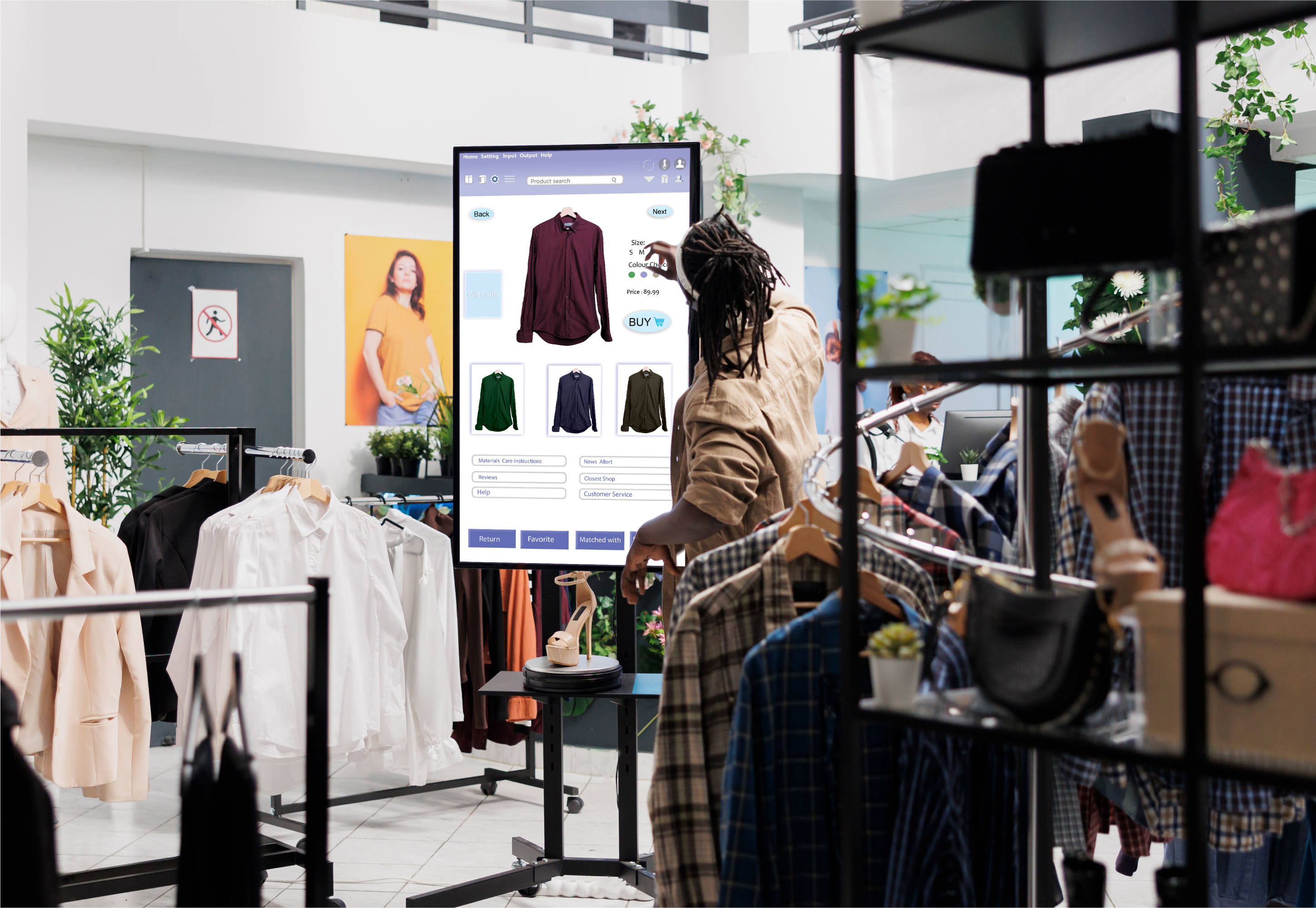
Digital Customer Experience: Trends in 2024
January 16, 2024
Customer experience (CX) has established itself as a critical element for business success
88% of consumers say the experience a company delivers is as important as its products or services. As we move into 2024, organizations must immerse themselves in best practices to meet their customers' expectations.
This article will delve into the future of customer experience (CX). What are our customers' expectations in terms of customer service and care? On what channels do customers prefer to interact with our brand, what level of satisfaction do our customers experience with speed of response and problem resolution, and most importantly, how can we optimize these processes?
10 customer experience trends that will take center stage in 2024
1. Faster response times
In a business environment where immediacy and efficiency are key values, organizations are prioritizing agility in customer service like never before.
This trend responds to the growing demand from consumers for quick responses and immediate solutions to their queries or issues. The recently passed Customer Service Law, which came into force in 2024 in Spain, establishes fundamental requirements for companies with more than 250 employees or a turnover of 50 million euros, which are obliged to have a Customer Service System. The legislation introduces crucial limits that directly affect business operations, with time management being a major concern. With a 3-minute cap for 95% of calls and a complaint resolution time frame of 15 working days, companies face the challenge of adapting to these restrictions.
In this context, companies are adopting advanced technologies, such as chatbots, process automation and more efficient ticket management systems, to speed up response times and provide more agile service.
Reducing response times is not just limited to initial reaction speed, but also encompasses the entire customer service cycle. From receipt of an inquiry to problem resolution, companies are implementing measures to optimize each stage and deliver a smoother and faster experience.
The strategic use of artificial intelligence and automation makes it possible to anticipate common queries, solve repetitive problems and efficiently assign the most complex cases to the right human agents. In addition, companies are implementing real-time response systems through various channels, such as online chat, social networks and messaging services.
2. Anticipatory, not reactive, customer service
Offering anticipatory rather than reactive customer service marks a fundamental shift in the way companies address the needs and expectations of their customers. Instead of merely reacting to queries and issues as they arise, organizations are adopting proactive strategies to anticipate and address their customers' needs before they manifest themselves.
This trend is based on leveraging advanced technologies, such as artificial intelligence and predictive analytics, to identify patterns of customer behavior and anticipate potential issues. Companies are implementing systems that enable them to collect and analyze data more efficiently, giving them the ability to anticipate individual customer preferences and needs.
Anticipation goes beyond simply foreseeing problems. It also involves offering personalized recommendations, relevant product or service suggestions, and providing useful information before the customer asks for it. Understanding customer preferences and behaviors enables companies to provide smoother, more satisfying experiences, fostering stronger, long-lasting relationships.
Successful implementation of this trend requires effective integration of technologies such as AI-powered chatbots, advanced data analytics and customer experience management platforms. It also drives companies to adopt a holistic approach to customer service, incorporating proactive practices at every stage of the customer interaction, from initial inquiry to post-sales support.

3. Automating the customer experience
In an increasingly digital, customer-centric business environment, organizations are proactively adopting automated solutions to improve the efficiency and personalization of interaction with their users.
This trend translates into the implementation of advanced artificial intelligence and automation systems, with the aim of streamlining processes, anticipating customer needs and providing personalized responses instantly. From initial assistance to issue resolution, automation is transforming the way companies manage the customer experience.
The use of intelligent chatbots and virtual assistants has become commonplace, enabling companies to offer 24/7 support without sacrificing quality of service. These systems not only respond to common queries, but are also able to learn and adapt to individual customer preferences, generating more personalized interactions.
In the context of Customer Experience, automation is not just limited to answering basic queries; it goes beyond that by triggering complex processes in real time. For example, when a customer makes an online purchase, automated systems can automatically handle order confirmation, inventory updating and preparation for shipping. This speeds up the process and provides customers with accurate, up-to-date information.
4. Generative AI and Chatbots
On the horizon of 2024, generative Artificial Intelligence (AI) and Chatbots emerge as undisputed players in the evolution of the customer experience. These advanced technologies are transforming the way businesses interact and connect with their customers, setting new benchmarks for personalization and operational efficiency.
Generative AI, with its ability to create content in a dynamic and personalized way, is leading the charge toward more individualized experiences. From marketing messages to real-time responses, this technology intelligently adapts to each user's preferences and needs, generating more meaningful and relevant interactions.
Chatbots, meanwhile, have evolved beyond simple virtual assistants. Equipped with artificial intelligence, these conversational agents understand the context of conversations, providing accurate responses and personalized solutions. This leap in chatbot capability not only accelerates the speed of response, but also contributes to a smoother and more satisfying experience for customers, establishing themselves as fundamental tools for real-time support and interaction. By 2024, these emerging technologies, like generative AI and chatbots, will continue to drive the redefinition of digital interactions and elevate the customer experience to new levels of personalization.
5. Immersive experiences
According to Zendesk, 77% of business leaders saw a positive ROI on investments in immersive experiences. Immersive Experiences are emerging as a prominent trend in the Customer Experience space. This evolution transcends traditional interaction by immersing customers in experiences that combine physical and digital elements, providing a deeper connection with brands.
Immersive experiences seek to captivate all of the customer's senses, creating interactions that go beyond the screen and generate a memorable impact. This is accomplished through technologies like augmented reality (AR) and virtual reality (VR), which immerse customers in virtual environments or enhance their perception of the real world.
In retail, for example, immersive experiences allow customers to "try" products virtually before they buy them, improving decision-making and reducing perceived risk. For services such as tourism, virtual reality can transport customers to destinations before making travel decisions.
These experiences are not just limited to the sales arena. Companies are incorporating immersive elements into customer service, such as real-time virtual assistance via holograms or interactive virtual environments to solve complex problems.
The key to this trend lies in creating memorable and personalized experiences. By enabling customers to interact more deeply with products or services, companies can generate stronger emotional connections and differentiate themselves in an increasingly competitive marketplace. Immersive Experiences are emerging as a catalyst for customer loyalty and building long-term relationships.

6. Sustainability as a priority
Companies are recognizing the importance of integrating sustainable practices into all aspects of their operations, from production to service delivery, in order to meet the expectations of environmentally conscious consumers.
This trend goes beyond simply adopting "green" practices; it involves a comprehensive transformation to address environmental and social challenges. From reducing waste to choosing sustainable suppliers, companies are actively aligning their values with those of increasingly sustainability-conscious consumers.
Technology plays a crucial role in measuring and managing sustainable practices. Data analytics tools assess the environmental impact of operations, identify areas for improvement and enable customers to calculate their carbon footprint. In addition, artificial intelligence is used to optimize processes, reduce waste and improve energy efficiency, contributing to more sustainable goals.
This integration of sustainable practices, supported by technology, not only reflects a commitment to environmental responsibility but also meets the growing expectations of consumers who value companies' eco-friendly initiatives.
7. Expanding omnichannel experiences
This approach involves providing a consistent and seamless experience across multiple interaction channels, seamlessly integrating communication between the customer and the brand. Omnichannel involves effectively integrating data and synchronizing experiences so that customers can seamlessly switch between channels based on their preferences.
In today's environment, customers expect the flexibility to interact with a company across multiple channels, whether online, in-store or via mobile devices. Omnichannel recognizes and respects these preferences, allowing customers to switch seamlessly between channels according to their needs and convenience.
Technology plays a key role in enabling connectivity and efficient information management across all touch points. Customer information, regardless of where it is collected, must be available and up-to-date across all channels. This gives customers a sense of continuity and personalization in every interaction.
Additionally, advanced customer experience (CX) management platforms enable real-time data collection and analysis, providing a complete view of customer behavior and preferences. Automated response systems, chatbots and artificial intelligence contribute to smooth and efficient interaction across multiple channels.
Those companies that adopt and effectively execute omnichannel strategies are better positioned to cultivate customer loyalty and stand out in an increasingly market focused on experience.

8. The personalization
In a context where individuality and unique preferences are highly valued, personalization remains essential for building strong customer relationships.
Today's strategies go beyond simply addressing customers by name, aiming to anticipate their needs and provide tailored recommendations based on their specific interests. Thanks to data analytics, artificial intelligence and machine learning, companies can gain a deep understanding of each customer's behavior, preferences, and needs. This information is then used to create personalized and relevant experiences across all touchpoints.
Examples we are already very familiar with include streaming platforms such as Netflix and Spotify, which analyze history to recommend personalized content; fitness apps that design routines tailored to goals and preferences; or fashion ecommerce that uses algorithms to recommend clothes based on user tastes.
In 2024, personalization is considered an essential requirement for companies in all industries seeking to improve the customer experience, responding to the expectations of consumers who already regard it as essential.
9. Data security and digital trust
When it comes to data security, honesty proves to be the best strategy. A single breach or misuse of data can permanently alienate a customer. To provide peace of mind and promote trust in the handling of personal and financial data, it is essential to transparently share privacy policies, explaining in detail how and for what purpose the data will be used.
In the realm of online shopping, data security becomes crucial to building customer trust. The implementation of advanced security protocols, such as multi-factor authentication using technologies like fingerprint or facial recognition, along with data encryption, adds additional layers of protection to safeguard payment information in electronic transactions. At SNGULAR, with our expertise in digital payment solutions and banking projects, we understand the importance of maintaining strong encryption, which is used to safeguard financial transactions and protect sensitive customer information in online environments.
Companies also implement anti-fraud measures and precautions, such as suspicious activity detection systems and automatic alerts for unauthorized transactions. These practices contribute to a safe and secure customer experience in the online environment.
10. Real-time information
Instead of relying on retrospective analysis, as mentioned at the beginning, organizations are adopting more proactive approaches by leveraging the ability to access, process and use real-time data. This strategy not only enables faster responses to customer needs and queries, but also facilitates immediate personalization of interactions and services.
This was seen in the statistics panels of BeatVote, our innovative solution that connects all electoral information in real time through widgets inserted in media websites. During the elections last July 23rd, users frequently refreshed the official websites of the main media to keep up to date with the election count. This real-time data approach allowed organizations and users to obtain instantly updated information, meeting clients' demand for immediate access.
In summary, the ability to access and utilize real-time data is vital not only for providing quick responses, but also for efficiently meeting client expectations instantaneously.
How do we achieve a great customer service experience?
At SNGULAR, we strive to provide you with the best customer service experience possible. We work hand in hand with you, strategically using technology to optimize your processes and ensure exceptional customer service. We implement innovative solutions that not only improve the speed of response to your customers, but also anticipate their needs and solve problems efficiently.
We support you in streamlining your processes through automation and the incorporation of problem-solving assistants that interact naturally, generating trust in every interaction. In addition, we apply robust measures to protect data integrity and your customers' trust, and design immersive experiences that leave a lasting and memorable impression.
We understand that consumer expectations are constantly growing, and we're here to provide the best solutions and a strategic plan to help you achieve those goals. At SNGULAR, we are not just your technology provider, but a trusted partner committed to helping you meet and exceed those evolving expectations.

